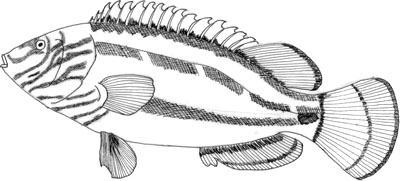Corkwing Wrasse (Crenilabrus Melops)

Latin name: Crenilabrus melops
Common name: Corkwing wrasse
In other languages: E: Porredana, F: Crenilabre Melops, D: Amsellippfisch
Class: Actinopterygii
Family: Labridae
Genus: Crenilabrus
Distribution: Though found in the Mediterranean this wrasse is more common in northern European waters where it is found more on the northern shoreline than it is in the south. It is however found in the Strait of Gibraltar and along the north coast of Africa as far as Tunis before it becomes scarcer.
Habitat: At home among weed beds and rock pools in shallow waters down to 30 metres.
Life Span: Up to 9 years.
Reproductio n: In the western Mediterranean they breed between March and June. Eggs are between 0.7mm and 0.85mm in size.
n: In the western Mediterranean they breed between March and June. Eggs are between 0.7mm and 0.85mm in size.
Behaviour: The males of the species are nest builders, using algae and seaweeds for building the nest in rock crevices.
Diet: Molluscs.
Size: Common: 10-20cm, maximum: 28cm; hatch at 2.5mm to 3mm and mature at 10cm at the age of 2 or 3 years.
Colour: Distinguised from the five-spotted wrasse (crenilabrus quinquemaculatus) by blue-black or greenish crescentic spot behind eye and black spot on lateral midline; the male has a yellow body with five dark brown transverse bands; median fins in red and yellow pattern; white lips; the female is olive-brown with two faint dark longitudial bands.